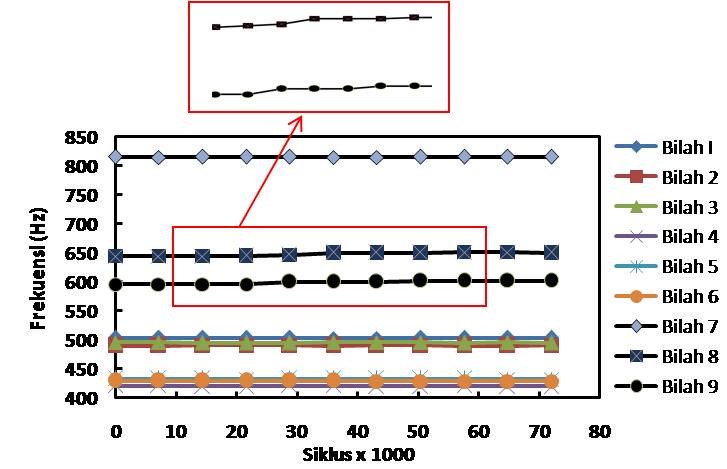GAMELAN WITHOUT FORGES MORE STABLE COMPARED TO FORGED GAMELAN
02/07/2020 Views : 331
I KETUT GEDE SUGITA
The main
process in gamelan production is the casting process. The casting process
traditionally uses open molding. The weakness of this method is the amount of porosity
that occurs in castings. Craftsmen usually do the advanced process that is the
forging process. The material is forged repeatedly so that it becomes solid and
porosity shrinks. Improvements to the components and casting process can reduce
porosity, which results in better acoustic properties of the gamelan.
Javanese or Balinese gamelan music players mostly play gamelan by hitting, repetitively according to the music being played. Figure 1 shows the sound resistance testing of casting bronze gamelan blades without forging and bronze gamelan with forging. Sound resistance is the gamelan's ability to receive repetitive loads (under plastic load) without changing its frequency
For frequency shift investigation, the original fundamental frequency of each alloy is measured and then each alloy is subjected to impact load by hitting them such as when they are played in daily use. The total number of cycles (hits) experienced by each alloy is 72,000. Finally the resulting fundamental frequency is measured and compared to the previous (before hitting) conditions. The frequencies were measured after a certain interval numbers of hit until total of 72,000 hits.

• Blades 1 - 6, Gamelan
without Forging
• blades 7 - 9, forged gamelan
It can be
seen from Fig. 1 that most of the frequencies of the bars (Bilah # 1- 6) measured
after a certain number of cycles remain unchanged (constant). No frequency
shift indicates that the bar will not detune (lost its tune) easily so that a
good sound quality can be maintained. An interesting phenomenon was observed
for bronze alloys that experienced forging process after casting and cutting.
These alloys easily change their frequencies, and in this study frequency
shifts up to 6 Hz were observed. It seems that the forging process that is
currently applied for these alloys tends to deteriorate their acoustics
properties as indicated by the frequency shift.
Frequency changes are caused by the release of residual
stress due to forging loads
It can be
seen from Fig. 1 that most of the frequencies of the bars (Bilah # 1- 6) measured
after a certain number of cycles remain unchanged (constant). No frequency
shift indicates that the bar will not detune (lost its tune) easily so that a
good sound quality can be maintained. An interesting phenomenon was observed
for bronze alloys that experienced forging process after casting and cutting.
These alloys easily change their frequencies, and in this study frequency
shifts up to 6 Hz were observed. It seems that the forging process that is
currently applied for these alloys tends to deteriorate their acoustics
properties as indicated by the frequency shift.
Frequency changes are caused by the release of residual
stress due to forging loads
